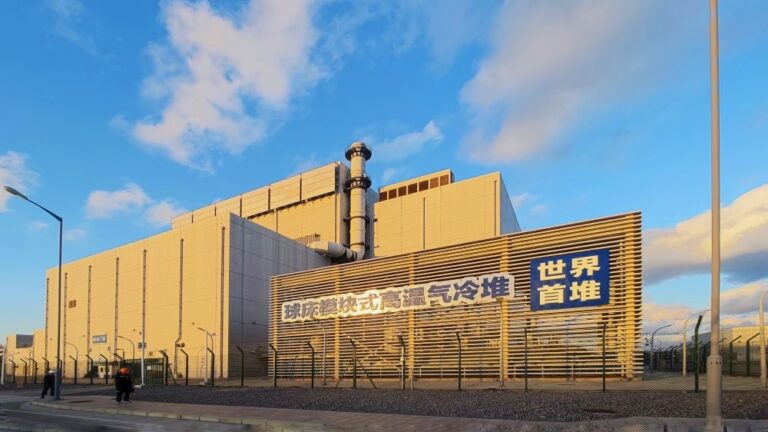Efforts to expand nuclear power have long been hampered by fears of massive reactor meltdowns, and China’s new reactor design represents the first full-scale demonstration of a system that can completely prevent meltdowns.
Despite the rapid rise of renewables, many argue that nuclear power still has a key role to play in the race to decarbonise the electricity supply, but accidents like Chernobyl and Fukushima have made people understandably wary.
Although modern reactor designs are much safer than previous generations, there is still a risk of a reactor meltdown, which means that the reactor’s cooling system fails, often due to a power outage, causing the core to run out of control and overheat, which could cause an explosion, breach the containment vessel, and spread radioactive material over a wide area.
But now Chinese researchers are conducting tests that prove a new type of reactor design is essentially immune to meltdowns. JouleThe researchers described tests in which they cut off power to an operating nuclear power plant, allowing it to cool passively.
“The reaction of nuclear energy and temperature in various reactor configurations indicates that the reactor can cool naturally without active intervention,” the authors write. “The results of the tests prove, for the first time, the existence of inherent safety on a commercial scale.”
Researchers at Tsinghua University conducted the tests at the 200-megawatt High-Temperature Gas-Cooled Reactor Pebble Bed Module (HTR-PM) in Shandong province, which began commercial operation last December. The plant’s novel design replaces the fuel rods found in traditional reactor designs with a large number of “pebbles,” each a few inches in diameter and made of graphite with a small amount of uranium fuel inside.
The technique significantly reduces the energy density of the reactor fuel, making it easier for heat to dissipate naturally if the cooling system fails. Small prototype reactors have been built in China and Germany, but a full-scale demonstration to prove the safety of the technology has yet to take place.
To test their new reactor, the researchers intentionally turned off power to both of the reactor modules and observed the results. Both modules cooled naturally in about 35 hours without any intervention. The researchers claim that this is proof that the design is “intrinsically safe,” which should significantly reduce safety system requirements for future reactors.
The researchers acknowledge that their design would make the electricity they generate about 20 percent more expensive than conventional reactors, but they believe this cost could come down once the technology is mass-produced.
China is not the only country building such reactors: US company X-Energy is designing an 80-megawatt pebble-bed reactor, called Xe-100, which is currently awaiting an operating license decision from the Nuclear Regulatory Commission.
but, New Scientist The researchers note that the technology can’t be installed in existing nuclear plants, meaning the risk of meltdowns at older plants remains, and because nuclear plants are typically so time-consuming and expensive to build, the technology is unlikely to become a significant part of the world’s nuclear fleet in the near future.
But by proving it’s possible to build a reactor that can withstand a meltdown, the researchers have neutralised one of the main objections to using nuclear power to tackle the climate crisis.
Image courtesy of Tsinghua University

